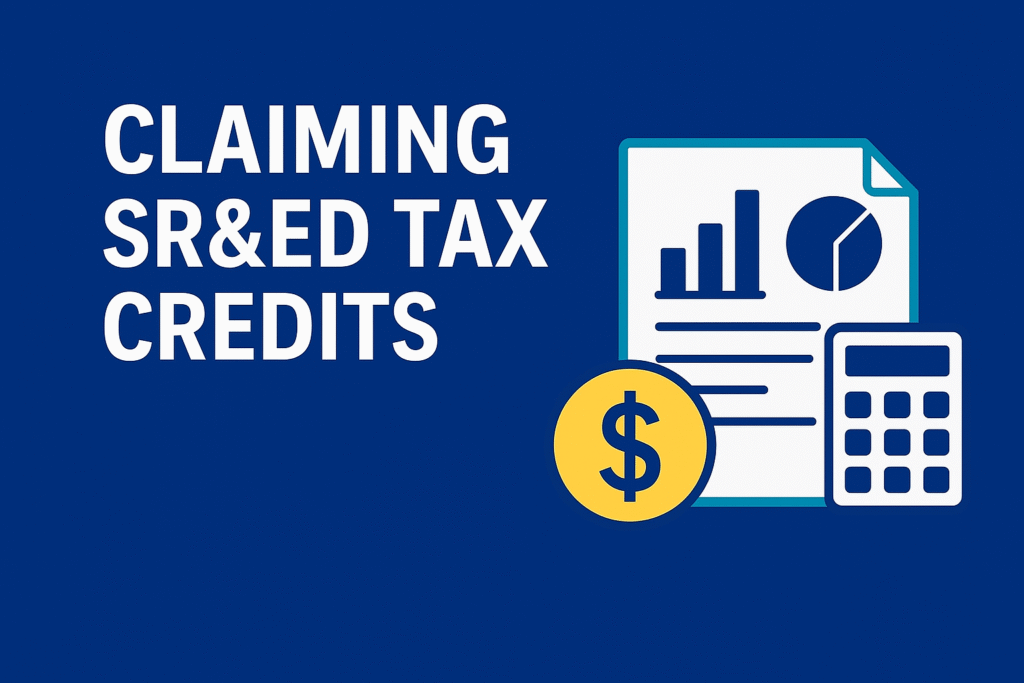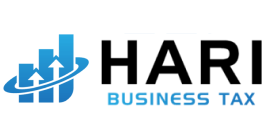Claiming SR&ED Tax Credits: What Canadian Businesses Need to Know
Request a Free Consultation
For many companies, tax incentives are an essential way to fund growth and innovation. The Scientific Research & Experimental Development (SR&ED) tax credit program is one of Canada’s most valuable incentives for businesses investing in research and development (R&D). Yet, many eligible businesses miss out due to misconceptions, incomplete documentation, or fear of audits. As a trusted tax accountant, Gondaliya CPA helps Canadian businesses navigate the complexities of SR&ED claims to maximize refunds and stay compliant with CRA rules.
Whether you run a technology startup, a manufacturing firm, or a construction-related R&D division, understanding SR&ED tax credits can lead to significant tax savings, improved cash flow, and a stronger competitive edge. This comprehensive guide explains what SR&ED is, how it works, which businesses qualify, and how to prepare a claim effectively.
Understanding the SR&ED Program
What Is the SR&ED Tax Credit?
The Scientific Research & Experimental Development (SR&ED) tax credit is a federal program that provides tax incentives to businesses conducting eligible R&D activities in Canada. It was designed to encourage innovation, technology advancement, and economic growth. Businesses can receive tax deductions or cash refunds for qualified expenditures such as wages, materials, subcontractor fees, and overhead related to R&D projects.
Why the SR&ED Program Matters to Canadian Businesses
-
- Cash flow support: Tax credits and refunds free up capital for growth.
-
- Competitive advantage: Funding innovation helps keep your products and services ahead of market trends.
-
- Tax efficiency: SR&ED credits can reduce both federal and provincial taxes.
Eligibility for SR&ED Tax Credits

Which Businesses Qualify
Any business operating in Canada — regardless of size or industry — may qualify if it undertakes eligible R&D work. This includes corporations, partnerships, and sole proprietors. Incorporated businesses generally benefit the most because of refundable investment tax credits.
Types of Eligible Activities
-
- Basic research: Advancing scientific knowledge without a specific practical application.
-
- Applied research: Conducting R&D with a specific commercial goal in mind.
-
- Experimental development: Creating or improving materials, devices, products, or processes.
Common Industries That Benefit
-
- Technology startups
-
- Manufacturing and industrial firms
-
- Food processing companies
-
- Construction and engineering firms
-
- Clean tech and green energy companies
Key Criteria for Eligible SR&ED Work
Technological Uncertainty
Your project must address a technological uncertainty that cannot be resolved by existing methods or standard practice.
Systematic Investigation
You need to follow a systematic approach — hypothesize, experiment, analyze, and draw conclusions.
Technological Advancement
The work should result in new knowledge or improved capabilities.
Qualified Expenditures
Labour Costs
Salaries and wages for employees directly engaged in eligible R&D activities are often the largest qualifying expense.
Materials and Supplies
Consumables used during experiments or prototypes may qualify.
Subcontractor and Consultant Fees
Payments to third parties performing eligible SR&ED work can be included if they meet certain conditions.
Overhead Costs
A prescribed proxy amount (PPA) can be claimed in lieu of tracking every overhead expense.
How to Prepare a Strong SR&ED Claim
Start With Proper Documentation
Maintain detailed records throughout the year rather than scrambling at tax time. This includes:
-
- Project descriptions
-
- Timesheets and payroll records
-
- Experiment results
-
- Material usage logs
Use Project-Based Accounting
Separate R&D costs from routine business expenses for clear reporting.
Engage a Knowledgeable Tax Accountant
Working with a tax accountant experienced in SR&ED ensures your claim captures all eligible expenses while minimizing audit risks.
Common Mistakes Businesses Make in SR&ED Claims
Waiting Until Year-End
Failing to track R&D activities throughout the year leads to incomplete claims.
Overlooking Indirect Costs
Many businesses miss eligible overhead expenses or subcontractor costs.
Misclassifying Activities
Routine quality control, market research, or styling changes typically don’t qualify.
Filing Late
Claims must be filed within 18 months of the fiscal year-end. Missing the deadline results in lost credits.
SR&ED Tax Credits and Incorporated Businesses
Advantages for Corporations
Incorporated businesses receive higher refundable rates and can plan SR&ED credits strategically to reduce taxes or receive cash refunds.
Integration With Other Tax Planning
A good tax accountant can integrate SR&ED credits with other incentives, dividend strategies, or income splitting to minimize overall tax liability.
Provincial SR&ED Credits
Many provinces offer their own additional SR&ED credits, increasing the total benefit. Examples include enhanced credits for Ontario-based businesses, which can add significant value on top of the federal program.
Steps to Claim SR&ED Tax Credits
Step 1: Identify Eligible Projects
Review your projects to determine which meet the SR&ED criteria.
Step 2: Collect and Organize Evidence
Document everything — from experiments to costs — throughout the year.
Step 3: Complete Required Tax Forms
File the SR&ED schedules with your corporate tax return.
Step 4: Respond to CRA Reviews if Needed
The CRA may request supporting information or conduct a review. Having organized records helps.
Benefits Beyond the Refund
Boosting Innovation Culture
Knowing that SR&ED credits are available encourages teams to experiment and innovate.
Improving Investor Confidence
Investors see SR&ED credits as a sign of R&D commitment and financial stewardship.
Creating Long-Term Tax Efficiency
Planning R&D with tax credits in mind can reshape budgets for years to come.
How SR&ED Credits Apply Across Industries
Technology and Software Development
Funding new software platforms, AI applications, or cybersecurity tools.
Manufacturing and Industrial R&D
Improving production processes, materials, or machinery.
Construction and Engineering
Developing new construction materials, energy-efficient building methods, or innovative project management techniques.
Clean Tech and Green Energy
Advancing environmentally sustainable solutions such as waste reduction or renewable power.
Documentation Best Practices
Timesheets and Payroll Tracking
Use clear timesheets showing hours worked on eligible projects.
Experiment Logs
Keep records of hypotheses, tests, and results.
Financial Records
Maintain expense breakdowns linked to each project.
Working With a Tax Accountant for SR&ED
Expertise Saves Time
An experienced tax accountant understands the CRA’s expectations, which can speed up the process.
Maximizing Eligible Expenses
Professionals know how to include overlooked costs and optimize claims.
Reducing Audit Risks
Properly prepared claims lower the likelihood of CRA challenges.
SR&ED and Other Tax Credits
You can combine SR&ED with other tax incentives, such as innovation grants or provincial programs, to maximize your total benefit. A coordinated tax plan ensures credits are applied strategically for your incorporated business.
Planning Ahead for SR&ED
Train Your Staff
Ensure your engineers, managers, and finance teams understand what qualifies as SR&ED.
Implement Project Codes
Assign codes to R&D tasks to make tracking easy.
Review Annually
Update your processes yearly to reflect CRA policy changes.
Frequently Asked Questions About SR&ED Tax Credits
What is the deadline to file an SR&ED claim?
You have 18 months from your fiscal year-end to file your SR&ED claim. Missing the deadline means losing the credit.
Can small businesses qualify for SR&ED credits?
Yes. Small and medium-sized incorporated businesses are often the biggest beneficiaries because they may qualify for higher refundable rates.
Does all R&D qualify for SR&ED?
No. Routine testing, market research, and product styling changes are typically excluded.
How much can my company get back?
Refunds vary based on your expenditures and your corporate structure, but credits can cover a significant portion of eligible costs.
Do I need a tax accountant to claim SR&ED?
It’s not mandatory, but working with an experienced tax accountant helps ensure compliance, maximizes your claim, and reduces audit risks.
How Gondaliya CPA Can Help You With SR&ED Tax Credits
At Gondaliya CPA, we specialize in guiding Canadian businesses through the complexities of SR&ED claims. Our team helps you:

-
- Identify eligible projects and expenditures.
-
- Set up systems for ongoing documentation and record-keeping.
-
- Prepare and file accurate SR&ED tax schedules with your corporate return.
-
- Integrate SR&ED credits into your overall tax strategy for maximum benefit.
We work with a wide range of industries — from tech startups to construction services and cleaning services — ensuring that no opportunity for tax savings is overlooked. By partnering with Gondaliya CPA, you gain a trusted tax accountant who can turn complex tax rules into practical advantages for your business.
Contact Gondaliya CPA today to find out how we can help you claim SR&ED tax credits and build a smarter, more profitable future for your company.

Sharad Gondaliya CPA Canada and CPA USA having 14 Years+ experience of Accounting, Tax, Payroll of Corporate Small Businesses as Tax Accountant. He is fully certified CPA Ontario and CPA USA. He is well known amoung Corporate Small Businesses for Tax Planning, efficient Tax solutions and for Affordable CPA services, He is Principal (Director) at Gondaliya CPA – Affordable CPA in Canada.




